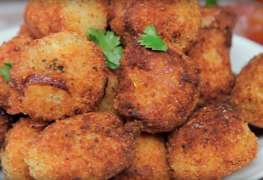 You’ve stayed the course, diligently counting your calories and sticking to an exercise plan for weeks, months or maybe even years. Your goal weight is in the rearview mirror and the jeans you had previously been saving as motivation now slide easily over your hips.
You’ve stayed the course, diligently counting your calories and sticking to an exercise plan for weeks, months or maybe even years. Your goal weight is in the rearview mirror and the jeans you had previously been saving as motivation now slide easily over your hips.
In short, your plan has worked.
Now what?
When you started your weight-loss journey, you might have approached it as a means to an end—a temporary situation, with a specific goal in sight. You might not have thought too much about what would happen when you reached that goal, though.
After an extended period of healthy (perhaps some would say strict) eating and exercising, it can be tough to make the transition from weight-loss mode to all-around healthy living. But bridging the gap between rigorous dieting and healthy living is essential to making your results “stick” for sustained, long-term success.
What’s the Difference Between Dieting and Healthy Living?
By their very nature, dieting and weight loss are restrictive and temporary, says Liza Baker from Simply: Health Coaching. In most cases, you limit or eliminate "unhealthy" things you love for the sake of losing weight, and once you're off the diet, most quickly regain it because they have not actually changed their habits.
Once you’ve reached your goal weight, instead of simply abandoning your diet and returning to those original unhealthy ways, the key is to adopt a healthy lifestyle—but what does that mean, exactly?
“A healthy lifestyle is about adding in deeply nourishing foods and lifestyle practices to build up your nutritional status,” Baker explains. When you embrace this outlook, she says, very often the idea of an external number falls away—suddenly, weight is not what you're most concerned about.
“When you feel this good, there is little incentive to even think about ‘maintenance mode,’ because you now live a lifestyle that is not only healthy, but easy,” Baker points out. “That's why shifting to a new way of being/eating/living is sustainable—there is no sense of punishing yourself or denying yourself, so there's no sense of ‘Oh good, now I can go back to eating the way I used to!’”
How to Transition When You’ve Reached Your Goal Weight
If you’ve reached your goal weight (or are close to it), you may be in one of two places: stuck at a plateau or in a fatigue point from the restrictions of your diet. In either case, it’s essential to transition to a healthy lifestyle in order to maintain the results you’ve worked so hard to achieve.
Stop listening to your internal food police.
“These are the thoughts in your head that monitor everything you eat or think about eating,” says Alissa Rumsey, M.S., R.D., founder of Alissa Rumsey Nutrition and Wellness and creator of the free challenge Ditch the Diet in 2018. “They're the unreasonable food rules that have developed after years of dieting. It's the voice that says you are ‘good’ for not eating dessert and ‘bad’ for having a bag of chips at lunch. In order to start viewing eating as a normal, pleasurable activity, you have to learn to let go of the food police.”
Rumsey points out that food rules start the guilt-deprivation cycle. In order to make peace with food and stop the chronic diet mentality, you need to feel comfortable integrating all foods into your diet and give yourself permission to eat them whenever you want—in moderation, of course. As your body starts to trust that it will still have access to any and all foods, you'll likely find that cravings and urges to overeat totally disappear.
Don’t obsess (too much) about your weight.
Once you’ve reached your goal weight, it’s normal to be a little—or a lot—scared of a setback. Rumsey points out that 95 percent of people regain the weight they lose on a diet, and two-thirds of them end up at a higher weight than when they started.
While there’s nothing wrong with periodic weigh-ins, resist the temptation to step on the scale every day (or every hour) to make sure your weight is remaining steady. Day-to-day fluctuations are normal, and it’s not productive or healthy to hold yourself to a rigid standard of a certain exact weight.
“Rather than focusing only on the number on the scale, focus on the things you can control, like your health behaviors around food, exercise, sleep and stress,” Rumsey recommends.
Start slowly reintroducing the foods you love.
Now is the time to change your relationship to the diet to one of enjoyment and abundance rather than the feelings of deprivation that people tend to get stuck on during a dieting phase.
Ken Immer, president of Culinary Health Solutions, recommends coming up with a list of the favorite foods that you might have cut out during the dieting phase and that you miss the most. After making the list, look for any foods that could be given a “healthy” makeover, perhaps by lowering the calories or portion size, using cleaner ingredients, adding some fiber or combining with other foods to balance macros.
“Start adding back some of these ‘made-over’ foods into your current plan to make things more familiar and enjoyable, and give you a sense of ‘cheating’ while still maintaining your program,” Immer suggests. “The best way to transition to a healthy living lifestyle after reaching your goal weight is to slowly shift the focus from following strict rules to indulging your taste preferences.”
Seek fulfillment beyond food.
As Baker notes, once you’ve achieved your goal, there are many other lifestyle choices to consider beyond diet and nutrition. For example: What is your physical activity level? How’s the health of your relationships? Are you deriving an adequate amount of fulfillment from your career, hobbies or spiritual practice? Are you getting enough sleep? How about your time spent in nature or with pets?
“These elements are all intimately and intricately related,” says Baker. “Pull one thread, another one loosens; loosen one thread, another one tightens.”
With the right balance of nutrition, moderate splurges, enjoyable movement, and spiritual and mental fulfillment, it is possible to bridge the gap between your dieting life and your healthy, happy future.








Leave a comment